As the weather gets warm, bathing your dog is an essential part of being a responsible pet owner as it helps to keep them clean and healthy in general. Bath time is a big part of your pet’s general health, even beyond the obvious advantages of a clean coat. But washing a dog involves much more than just putting them in the tub and scrubbing them.
Your dog, of course, is the perfect companion to explore new spots and enjoy new adventures with. Although the great wide open is a dog’s natural environment, there are several best practices you should follow when being in the wilderness with your pup.
A friend is a friend and a dog is a dog. A friend will never be a dog, but a dog won’t ever quit being a friend.
Jean Paul Malfatti
Understanding how frequently a dog should be bathed is essential before starting on this journey of dog cleanliness, as it varies depending on breed, coat type, and activity level. To maintain the health of both their skin and coat, it is equally important to choose the correct shampoo, one that meets your dog’s specific needs. It is crucial to make pre-bath preparations, such as cutting nails and cleaning ears, before starting the bath. Through the use of these strategies and considerations, you may make washing your four-legged partner a meaningful and joyful ritual for both of you.
Frequency Matters:
Dog breed, size, coat type, and activity level are just a few of the variables that affect how often a dog gets bathed. Dogs with short hair typically don’t need to take baths as often as those with lengthy or thick coats. Compared to couch potatoes, active dogs who enjoy outdoor experiences may require more regular bathing.
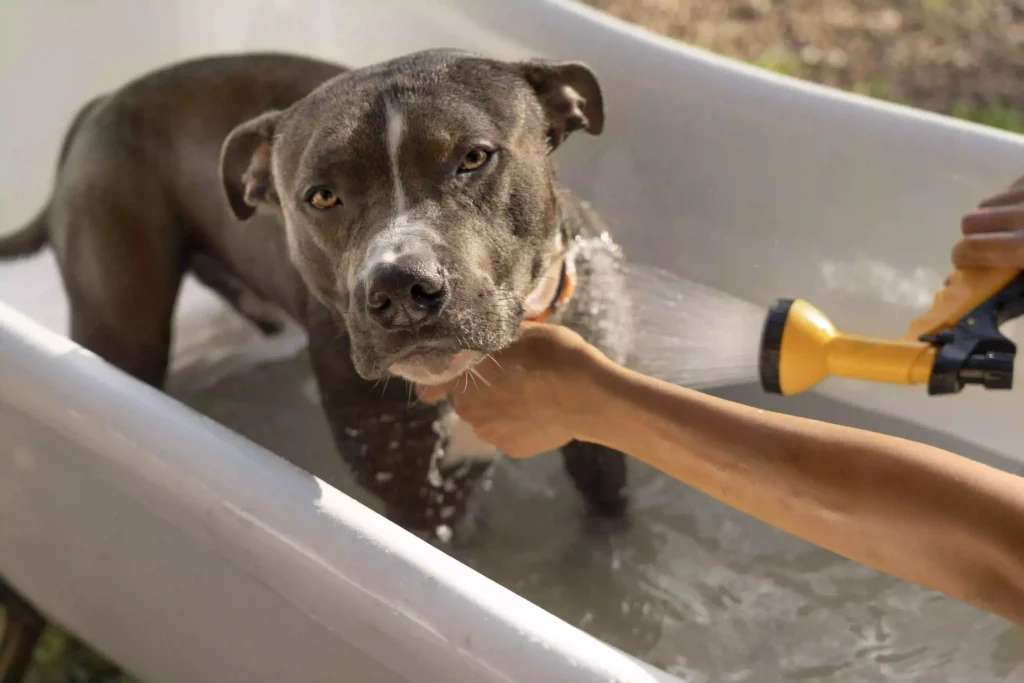
Another factor to consider when starting your dog’s bathing practice is size. Larger breeds may need more frequent bathing because of their larger bodies and possible increased exposure to the outdoors. Conversely, smaller dogs could be easier to handle and require fewer baths. Dogs who enjoy going on walks, exploring parks and trails, and participating in strenuous physical activities may require more regular bathing sessions to get rid of accumulated dirt and odors.
An appropriate and successful hygiene routine can be achieved by adjusting the frequency of bathing to your dog’s unique qualities, such as breed, size, coat type, and activity level.
In conclusion, by keeping an eye on these variables, you can find a balance between keeping your dog clean and protecting the natural oils that are vital to the health of their skin and coat. By modifying your bathing routine to account for these factors, you improve both your dog’s general health and your relationship with your four-legged buddy.
Choosing the Right Shampoo:
Choosing the correct shampoo for your dog is more than just a cosmetic decision; it’s an essential part of their grooming routine
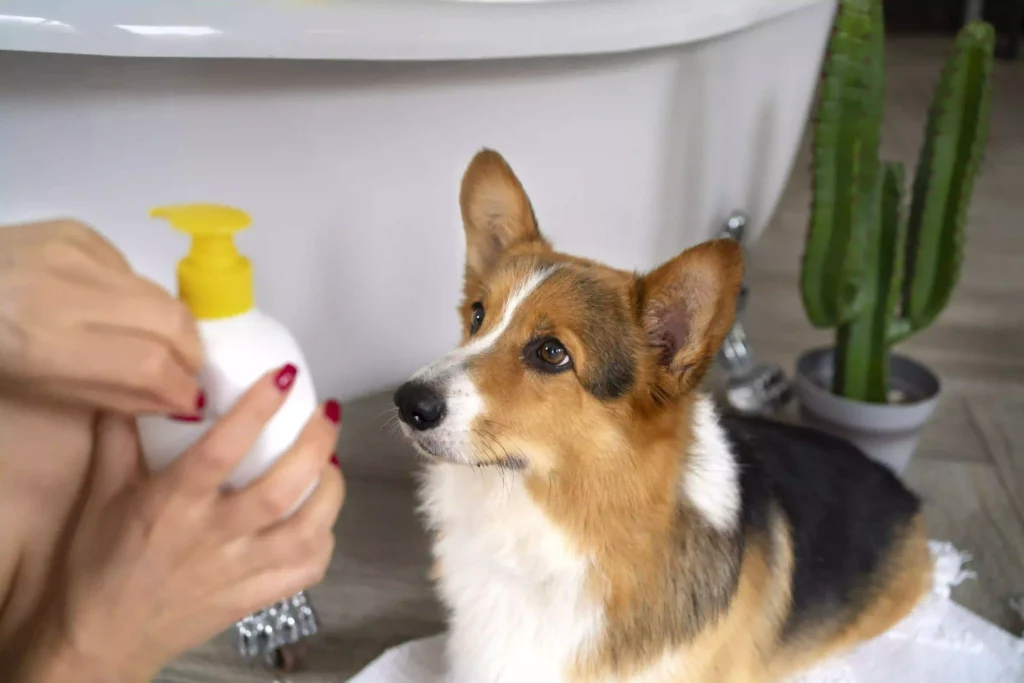
It’s important to understand that not all shampoos are appropriate for our dogs and that giving them human shampoos may cause irritation to their sensitive skin. Ingredients in human shampoos frequently deplete a dog’s coat of its natural oils, causing dryness and discomfort. Because dog skin has a different pH balance than human skin, using specialty dog shampoos is essential to giving your pet the skin and hair care they need.
Brushing Before Bath:
Before bathing your dog, brushing them helps get rid of mats and loose hair, which improves the cleaning experience. Additionally, it lessens post-bath loss and keeps hair from clogging the drain.
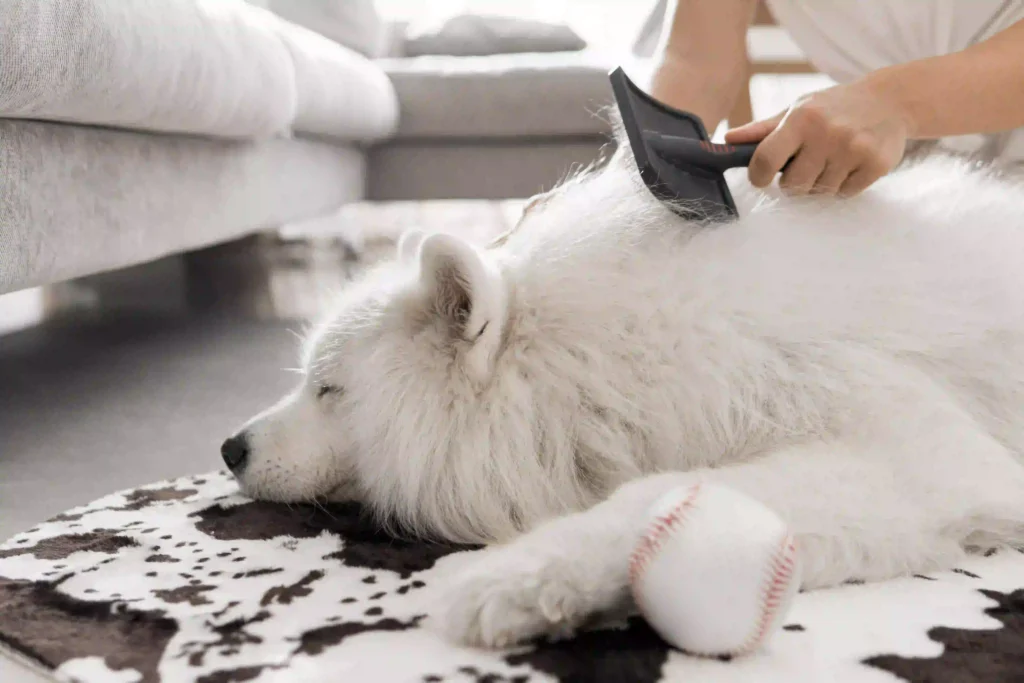
- Brushing removes loose hair, minimizing shedding during and after the bath.
- Regular brushing prevents mats and tangles, keeping the coat smooth.
- Removing loose hair before the bath enhances the effectiveness of cleansing.
- Brushing reduces the risk of hair clogs in the drain, preventing plumbing issues.
Pre-bath brushing also has a practical benefit in that it keeps hair from becoming stuck in the drain while taking a bath. Brushing regularly reduces the possibility of drainage issues and guarantees a smooth water flow when taking a bath. A holistic approach to dog care that promotes cleanliness, comfort, and your beloved pet’s general well-being is to adopt the brushing before bathing routine.
Gathering Supplies:
It’s important to spend some time assembling a reasonable choice of materials before beginning the enjoyable job of bathing your dog. Gather the items that will help you and your pet have a comfortable and peaceful bathing experience in addition to making bathing easier.
- Dog Shampoo:
- Select a premium, dog-specific shampoo.
- Address your pet’s specific skin and coat requirements.
- The choice of shampoo significantly impacts the effectiveness of the bath.
- Cloth Towels:
- Ensure an ample supply of fluffy, absorbent towels.
- Handy for drying your dog after a wash.
- Contributes to your dog’s comfort post-bath.
- Non-Slip Mat for the Tub:
- Enhances stability and safety during baths.
- Prevents slipping for both you and your dog.
- A small but essential element for a secure bathing experience.
- Hair Dryer:
- Keep a hairdryer on standby.
- Use a soft, low-heat setting for quicker drying.
- Ensures your pet remains cozy and warm post-bath.
- Brush:
- Maintain an appropriate brush for your dog’s coat.
- Use before bathing to remove tangles or mats.
- Facilitates a smoother and more enjoyable grooming process.
Temperature Matters:
One very important part of bathing a dog is to remember that they are sensitive to water temperature. It’s crucial to use lukewarm water to produce the ideal bathing atmosphere. This guarantees that your dog will have a nice experience and avoids any needless stress or pain.
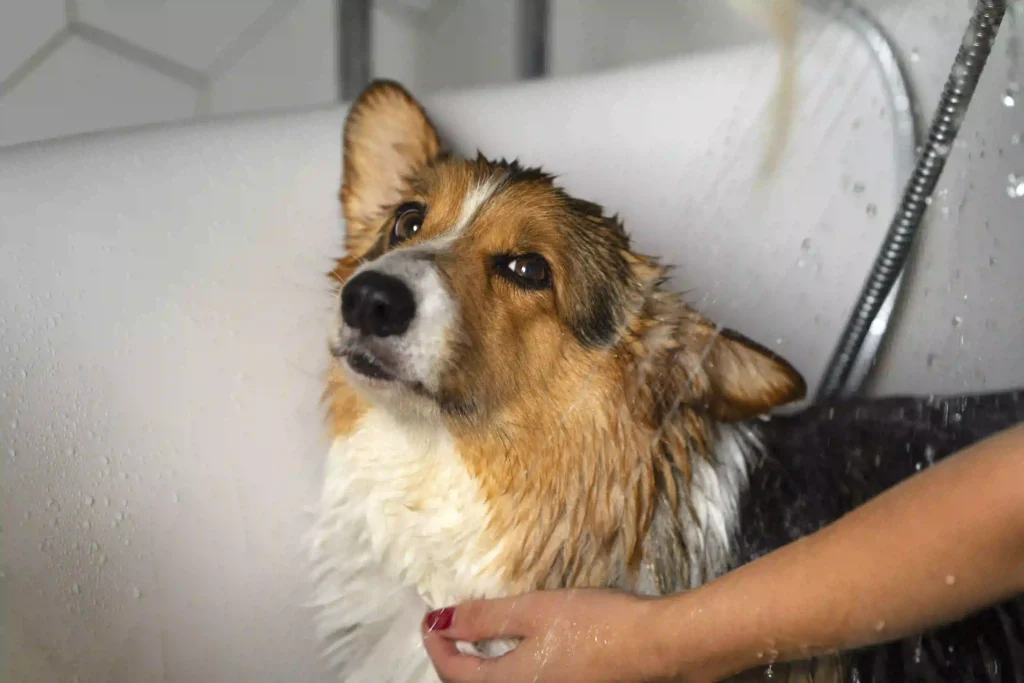
“I was under the impression. When you give your dog a bath they are supposed to smell better”
Before starting the bath, test the water’s temperature on your wrist for accuracy. It’s a quick and easy method. This tactile check makes sure that the water is not too hot, which could burn your dog’s delicate skin, or too cold, which could make bathing your pet unpleasant and unwanted.
By giving careful thought to the water’s temperature, you are demonstrating your dedication to giving your pet a pleasant and comfortable grooming experience, strengthening your relationship, and building trust.
Proper Technique:
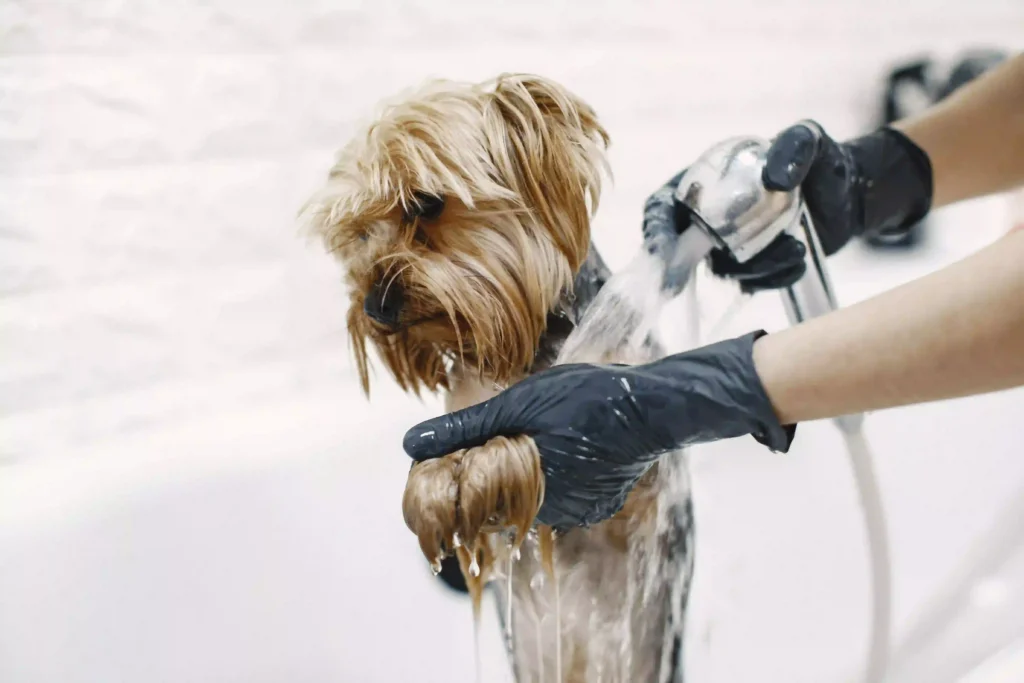
It is critical to bathe your dog methodically for a successful and friendly cleansing experience. Begin at the neck and work your way down, ensuring that you cover all parts of your pet’s coat. To avoid discomfort or irritation, use caution near sensitive areas such as the eyes, ears, and mouth.
During the shampooing process, these regions demand extra care and a soft touch. It is critical to completely rinse the shampoo after lathering it to remove any soap residue. Leftover shampoo can cause skin irritation, so thorough washing ensures that your dog’s skin is clear of any possible irritants.
Drying Off:
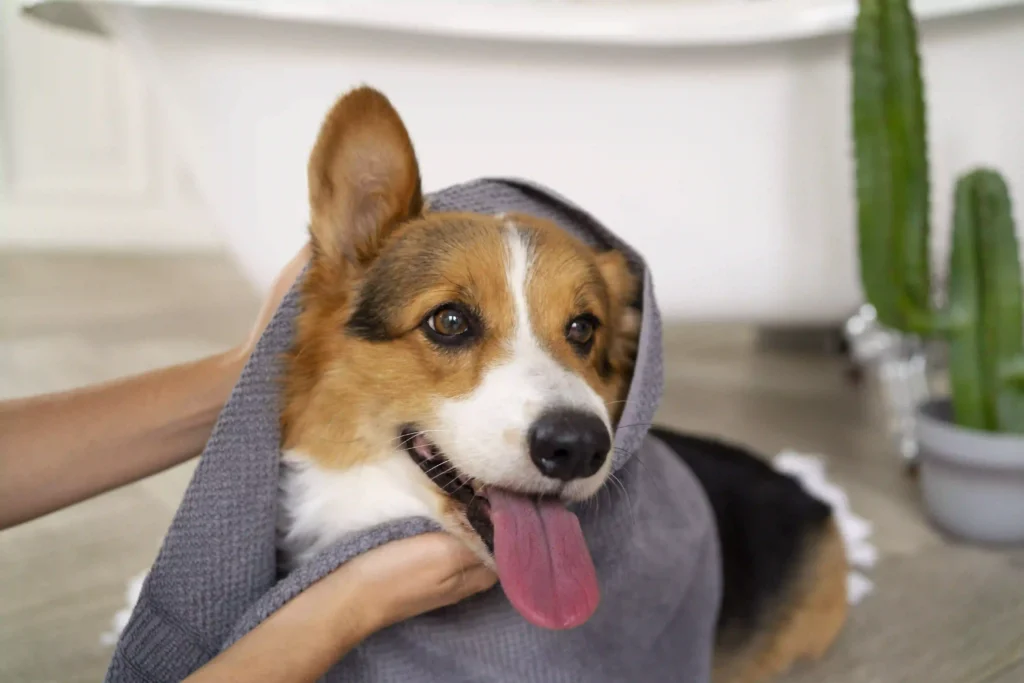
After a wash, drying off your dog is an important step in ensuring their comfort and well-being. Use a soft, absorbent towel to completely dry your pet, keeping in mind that different dogs will respond differently to this procedure. While some dogs may like the experience, others may be less enthusiastic.
Patience is essential, and using treats or toys as distractions and rewards will help your pet enjoy the drying process. Consider using a blow dryer on a low, cold setting on dogs with long coats to speed up the drying process and minimize any residual wetness. By addressing this post-bath process gently and with positive reinforcement, you not only satisfy their bodily requirements but also foster a favorable relationship with grooming in general.
Post-Bath Care:
Post-bath care is an important part of keeping your dog healthy and happy. Following the bath, examine your dog’s ears, eyes, and teeth. This routine examination gives an ideal opportunity to detect any anomalies or early warning signals of future health problems.
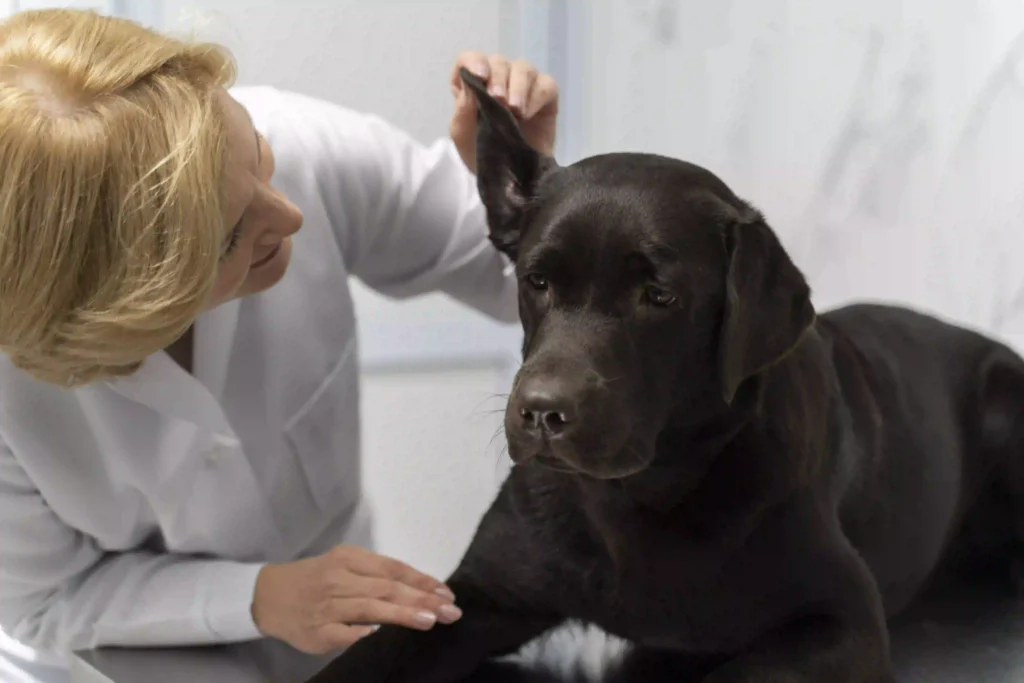
Trim your dog’s nails as required at this period to ensure their comfort and avoid any pain or difficulties. Positive reinforcement, like as treats or praise, can be used to reinforce a positive association with grooming by rewarding your dog for excellent behavior throughout these post-bath care chores. By implementing these checkups into your routine, you are contributing to your pet’s preventative health care, creating a deep relationship and a lifetime of happy companionship.
Conclusion:
Bathing your dog is an important part of responsible pet keeping since it improves their health, cleanliness, and general well-being. Understanding your dog’s individual needs, utilizing the proper products, and adopting a gentle approach may make bath time pleasurable for both you and your canine companion. Remember, a clean and happy dog is a healthy dog!

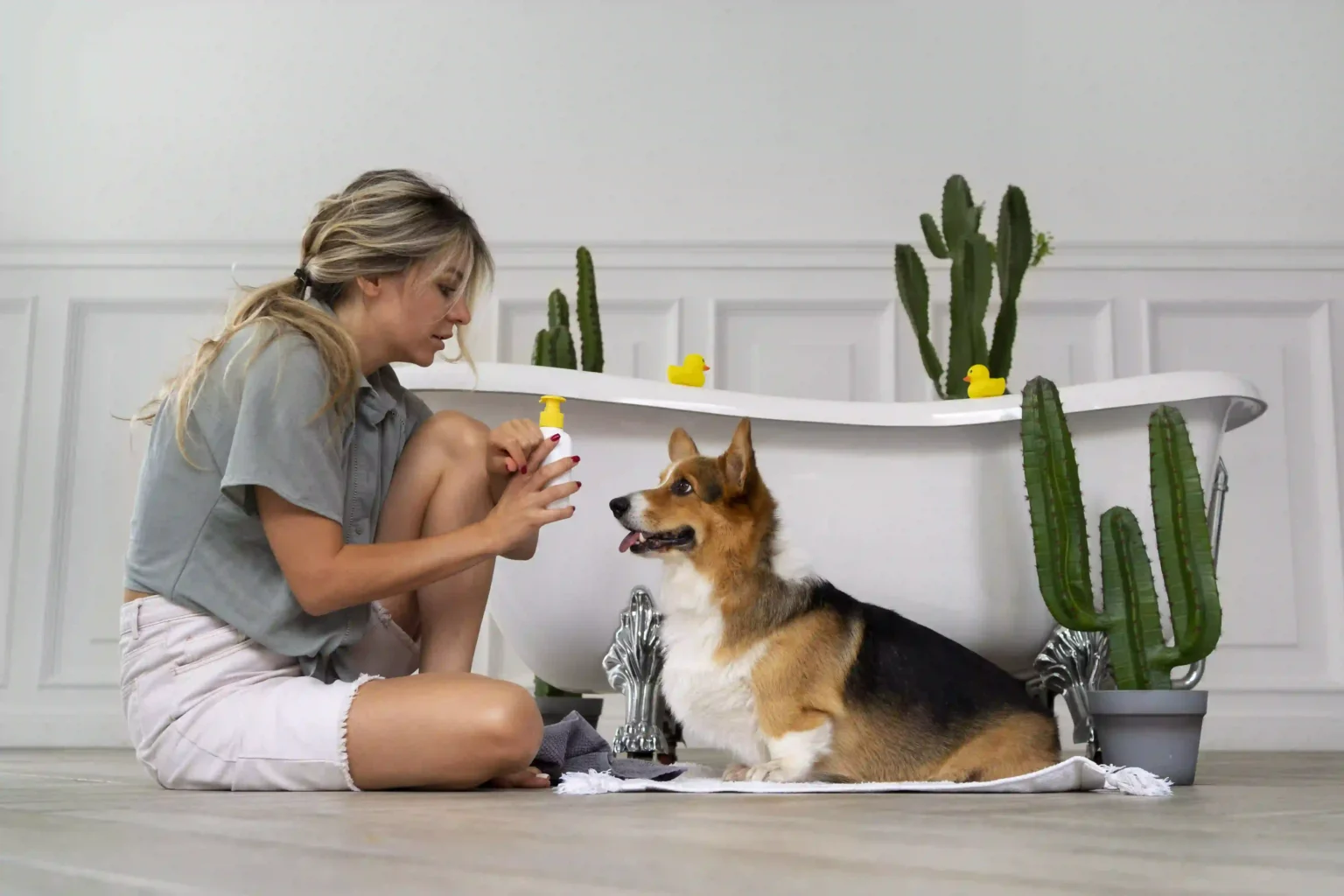

This is one of the best-designed sites I’ve come across. Well done!
Very clean website , regards for this post.
Hi there, i read your blog occasionally and i own a similar one and i was just curious if you get a lot of spam comments? If so how do you prevent it, any plugin or anything you can recommend? I get so much lately it’s driving me insane so any assistance is very much appreciated.